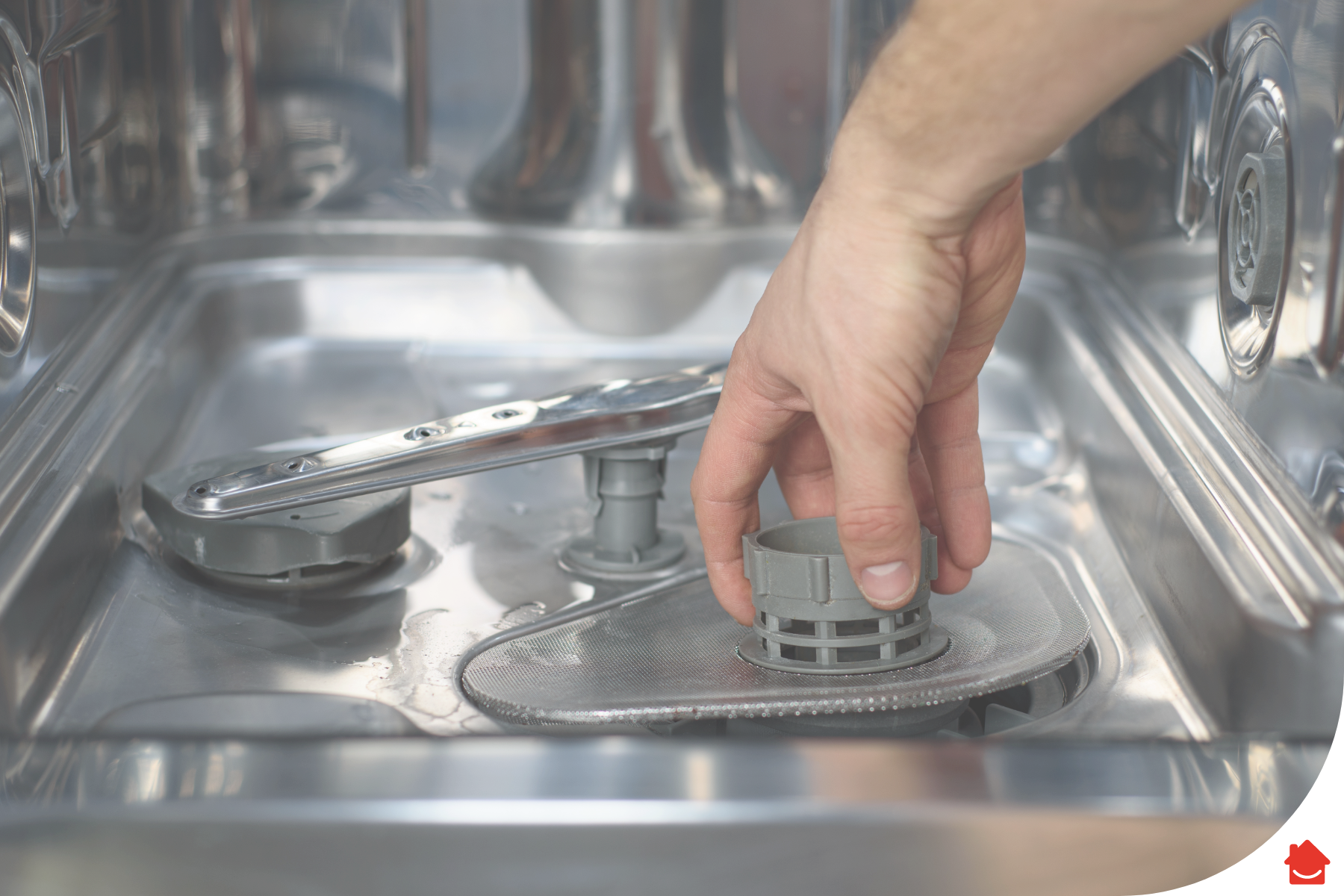Plumbing advice
How to unblock a dishwasher
12 Mar 2021 • 8 minutes


A blocked dishwasher – or a dishwasher that can’t drain – is one of the most common and scummy dishwasher faults. And because the trusty dishwasher is such a cherished household appliance, we miss it when it’s out of action. As well as saving us the bother of rolling up our sleeves, it saves a lot of water. This guide will help you get your dishwasher unblocked ASAP and restore your dishwasher to its former glory.
Glad you asked – it’s estimated that washing up by hand uses on average 49 litres of water, while the average dishwasher uses 10 to 12 litres.
Even by conservative estimates, this means you’re saving approximately 75% of the water used, making your dishwasher less of a luxury item and more of an eco-warrior in stainless steel. So let’s get yours fixed.
The first sign you might see that your dishwasher is blocked is a lot of standing water at the bottom. If it’s not draining at all, don’t worry; once you’ve found out the cause, you might then be able to fix it yourself.
Let’s look at the three main areas where a blockage is likely to form in a dishwasher, and how to unblock them.
Safety reminder: Remember to switch off and unplug your dishwasher from your mains electricity before you start delving into and removing parts.
A dishwasher’s filter is its first line of defence against food bits and scraps coming in. Its job is to catch it before it has a chance to reach the pump and cause further problems. So your filter should be your first port of call when troubleshooting, and something you check and clean regularly to prevent blockages and further damage from happening.
Your dishwasher filter is very easy to check, clean or replace. You’ll find it at the bottom of your dishwasher. Depending on your particular make and model, remove it either by pulling or unscrewing it. If you’re not sure where your machine’s filter is located, check the manual or manufacturer’s website for details.
If you use your dishwasher regularly, it’s a very good idea to clean your filters every week or so. Read our how to clean a dishwasher article for more on daily, weekly and monthly dishwasher maintenance that’ll keep your machine clean and serene for years.
Your dishwasher spray arms on the motor spin around spraying hot water on your dishes when your dishwasher is doing its thing.
Just like the filter, the spray arms can get clogged up with bits of food and grime. The consequence of this is that the water jets become blocked so no water can get to your dishes, which means they won’t be coming out completely clean.
Again, this is a relatively simple task and can be done by following the steps below:
Warning: Don’t use strong chemical cleaners on the sprayer arms. If the build-up isn’t removed during the first or second washing, soak the arms in hot water with a grease-cutting, dishwashing detergent for up to half an hour. Rinse and repeat until the build-up is gone.
The third possible cause of your blocked dishwasher is the drain. If your dishwasher drain is clogged, scummy water will collect in the bottom of the machine, along with food debris and potentially bacteria.
The drain hose from your dishwasher is usually plumbed to your kitchen sink waste or the drain of your kitchen waste disposal if you have one. If this is the case, you’ll want to keep your sink and disposal drain as clear as possible in order to allow water to freely pass through it. If your disposal is completely full and loosens up anything that needs a bit of help.
It would be ideal to also pour some baking soda and white vinegar down the drain, wait for a couple of minutes, and then follow with some boiling water.
While the above are some of the areas of your dishwasher that can easily become blocked and prevent the appliance from working to its full potential, these problems can be avoided by:
A monthly service wash involves putting your dishwasher on a full cycle while it’s empty, with just a little bit of white vinegar and baking soda poured in. This will remove small particles of dirt and grime that have the potential to build up and cause blockages, ensuring your appliance continues to run at peak performance for longer.
Also, take the time to regularly check the three areas mentioned above, check out our how to clean a dishwasher article and you’ll keep on having crystal clean glasses, plates, pots and pans.
Identify and then clear the source of the blockage:
You can take out the filter and sprayer arms and clean them in the sink. If your blockage is in the drain hose you will need to safely remove it and unclog it.
No. Drain unblockers contain extremely strong chemicals that should only be used in emergencies, in drains, when you have exhausted all other, less harmful methods of unblocking a drain. If you use it in your dishwasher, it may leave behind chemical residues that are harmful to your health.
It’s usually a blockage in the filter, the sprayer arms or the drain hose. You need to locate and clear the blockage by cleaning and unclogging each item.
If you’ve checked and cleared your dishwasher filter, sprayer arms and drain hose and your dishwasher is still not draining, you could have a faulty drain pump. In this case, it’s time to call an expert.
Our help & advice articles cover Plumbing, Home heating, Electrical, Energy-saving and Home maintenance.